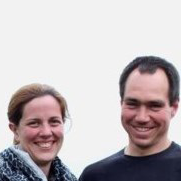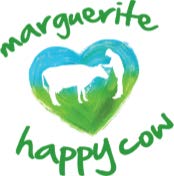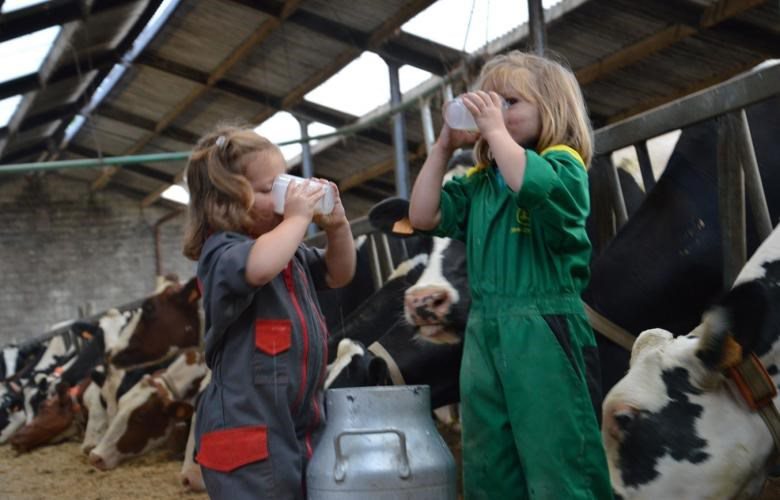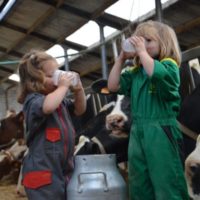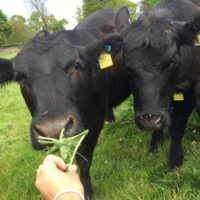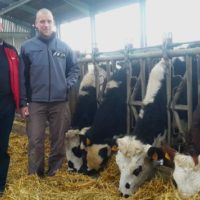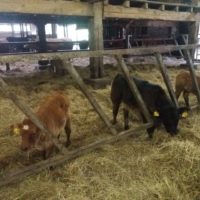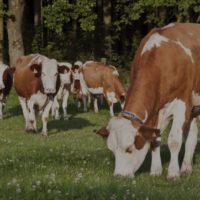« Marguerite Happy Cow » Differenciated milk cooperative
Farm: “Ferme du Bois de Herve – Christophe Darchambeau”
Location: Herve, Belgium
Case study
 « Marguerite Happy Cow » Differenciated milk cooperative (.pdf)
« Marguerite Happy Cow » Differenciated milk cooperative (.pdf)
Description
Background
The farm is located in Herve, a small city near Liège in the Eastern part of Belgium. The village gives his name to all the agricultural region called “Plateau de Herve”, which is a permanent pasture region. More than 90 % of the agricultural area is covered with permanent grassland and the region is specialized in cow milk production. A special cheese is also called “Fromage de Herve” and is protected by the European IGP system.
Christophe Darchambeau’s farm is a typical farm of the Plateau de Herve. It’s operating on 60 ha, mostly occupied by permanent grassland and 7 ha of maize silage. The farm counts about 80 dairy cows and 60 young females for replacement, all Holstein breed. 40 ha are close to the farm and provide the necessary surface for a pasture based production during around 7,5 month a year.
In 2008, when he was 25, Christophe settled as a dairy farmer. He took over the farm of his uncle. During the first years, his wife continue to work as an employee, but they have the ambition to work together on the farm.
With the dairy crisis of 2014, Christophe and Sabine are faced with two options: either they borrow and heavily indebted to increase their herd of cows, hoping to reach a decent income; or they diversify their activities in order to increase the earning.
The couple then decides to start a few school visits. Then they invest themselves to receive and animate the proposed activities. Today, the couple works full time on the farm and has just hired a person for the summer season. It’s very important to present agriculture to other persons and especially children. The farm welcomes more than 3000 persons a year with this activity.
Detailed description
The innovation concerning grass is the participation of Christophe Darchambeau as member of “Marguerite Happy Cow”.
The cooperative Marguerite Happy Cow existing since 2015 and brings together regional dairy farmers and processors. In 2017, 9 dairy farmers are involved for a production of about 4 million liters milk per year, one feed processor and 2 cheese factories. The aim of the co-op is to product a differentiated-quality milk, based on grass and local production. Another goal is to give the concerned producers a fair income for this quality. From now on, consumers are also allowed to take part into the co-op.
Production specifications are discussed between cooperative members and are controlled by an external certification organisation. Here are the 5 key specifications for Marguerite Happy Cow :
Grass and pasture :
The first and most important point is linked to grass, which is very important for the quality of the milk and the quality of the cheese.
Milking cows must pasture at least 180 day per year. The surface rate is maximum 4 milking cows per hectare of pasture, in average, during all the season. The total ration (raw forages) must also include more than 70 % of grass.
Local feed :
All the feed must be natural and local.
All forages must come from less than 100 km ; and all concentrates from less than 300 km. Anyway these restrictions about pasture and grass (here presented and other) lead to reduce forage importation needs. GMOs and palm products are also strictly banned.
A differentiated-quality milk :
Grass silage must be analysed and must be dry enough. The milk quality is controlled every time and has to respond to high quality criteria. These are about maximum presence of butyric and e.coli. The minimum protein content must be 3,4 % in average on the year. The milk is loaded distinctly and goes directly to the cheese factories.
Human scale and fair income :
The obligation to pasture enables to keep human scale farms.
The milk price is always higher than other dairy. This is justified by the high quality of the milk and the farmers production constraints. The bonus varies, and depends of the average milk price in Belgium. When the milk price is low, the bonus is higher. This contributes to give dairy farmers a fair and more stable income.
Local products :
The local transformation into cheeses, and also other products in a near future, leads to generate added value for all members of the co-op. Members are more implicated in all the process and can benefit from this more efficient integrated production system.
Results
An adaptation phase took place. During one year, before the engagement in the cooperative, the milk quality and the implementation of the other specific production requirements were observed on the farm.
Some requirements needed for the production of cheese imposed small changes. It’s more adjustments than big transformations. And these adjustments don’t need investments or costs. For example, the silage dry matter has been changed. The silage is now harvested at a higher dry matter for the quality of cheese. Also, cleaning wipes are now used for each milking.
The milk price is more stable in the Co-op. But this result is less visible during the last two years, because the standard milk price is quite stable and high.
There is a good satisfaction to produce a differentiated-quality milk. The communication with consumers is also very important and completely in touch with the other activity of school visits.
Adoption criteria
The first important criteria for Christophe is economic. The participation into the Co-op don’t need financial investment or major modification in his farm. It’s very important for a young couple of farmers.
It allows to participate to local production (very popular nowadays) with no needs of big investments or additional work on the farm.
Another important criteria is communication. For the participation in this king of project, farmers must like to communicate, with other farmers and processors in the cooperative and with consumers. It’s also important to respect also the decisions of the Co-op and to implement modifications if needed.
Future prospects
Since 2018, the co-op is also open for the consumers. They can invest small amount, but the goal of this is not the money. With the inclusion of consumers the co-op can have a feedback and fresh ideas about the products,… and it’s a beautiful way to make publicity by word-of-mouth.
Additional information
| Farming system | conventional farming |
|---|---|
| Domains of innovation | farm system, marketing, product processing |
| Main types of animal | dairy cattle |
| Country | Belgium |
| Product type | Case study |
| Language | English |

